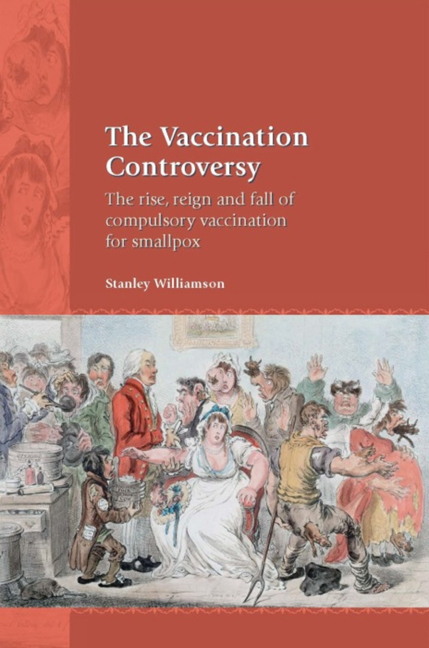Book contents
- Frontmatter
- Dedication
- Epigraph
- Contents
- Acknowledgements
- Part I The Road to Compulsion
- 1 The Byzantine Operation
- 2 The Small Pockes
- 3 The Engrafted Distemper
- 4 The Language of Figures
- 5 The Suttonian System
- 6 The Great Benefactor
- 7 The Speckled Monster
- 8 The Three Bashaws
- 9 A Competent and Energetic Officer
- 10 Formidable Men
- 11 The Present Non-System
- 12 Toties Quoties
- 13 Crotchety People
- Part II The Reign of Compulsion
- Part III The Retreat from Compulsion
- Notes
- Bibliography
- Index
2 - The Small Pockes
from Part I - The Road to Compulsion
- Frontmatter
- Dedication
- Epigraph
- Contents
- Acknowledgements
- Part I The Road to Compulsion
- 1 The Byzantine Operation
- 2 The Small Pockes
- 3 The Engrafted Distemper
- 4 The Language of Figures
- 5 The Suttonian System
- 6 The Great Benefactor
- 7 The Speckled Monster
- 8 The Three Bashaws
- 9 A Competent and Energetic Officer
- 10 Formidable Men
- 11 The Present Non-System
- 12 Toties Quoties
- 13 Crotchety People
- Part II The Reign of Compulsion
- Part III The Retreat from Compulsion
- Notes
- Bibliography
- Index
Summary
Opening their account of the campaign conducted by the World Health Organization that in 1979 finally extinguished, or, as their forerunners might have said, ‘extirpated’ smallpox from the earth, the authors remark: ‘The majority of people – including the majority of physicians – now living have never seen a case of this once dreaded disease’. In the years since that number will have declined even further, and it therefore seems desirable to recall something of the history and characteristics of the disease which once inspired so much dread.
The early history of smallpox is one of the areas in which the uninstructed traveller trying to find his way is most likely to lose it. Accounts are littered with signposts indicating paths that ‘may’ lead in the right direction, or destinations that ‘could have been’ the one being sought. Dates hazarded for remote events, such as the emergence of smallpox as a disease of animals, or its transference to human beings, may vary by several thousand years. ‘Plagues’ or ‘pestilences’ referred to could have been examples of any one of a number of diseases incorporating some sort of rash, a difficulty complicated over the centuries by what one authority describes as ‘the uncertainties of translation’. The most common candidates for confusion include smallpox, measles, chickenpox, scarlet fever and erysipelas, any one of which the puzzled pathfinder may conclude is interchangeable with any of the others. Students of etymology may be interested in the attempt of Creighton, the great historian of epidemics, to unravel some of the more recondite examples.
The most commonly accepted sequence of events is that smallpox emerged as a disease of some species of animal in Africa in prehistoric times, was somehow transferred to human beings and eventually found a route to the Far East. Creighton disposed of this earlier migration somewhat summarily: ‘the evidence of the antiquity of smallpox in China and India may be accepted and for the rest left out of account’.
- Type
- Chapter
- Information
- The Vaccination ControversyThe Rise, Reign and Fall of Compulsory Vaccination for Smallpox, pp. 8 - 28Publisher: Liverpool University PressPrint publication year: 2007



